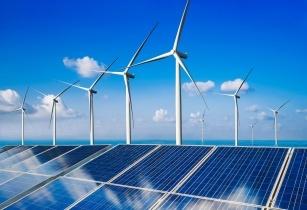Global renewable energy installations have broken industry trends in 2021 as residential solar outpaced commercial and industrial (C&I) capacity additions for the first time and new onshore wind ones declined, Rystad Energy research shows
This year has been a record-breaker for renewables globally, with 227GW of new capacity installed, a 4.7% increase over 2020 levels. Installed utility solar PV, residential solar PV, offshore wind, battery, and other forms of energy storage have all increased in addition terms in 2021. Utility battery storage set a record high, growing three-fold, while new offshore wind installations doubled compared to 2020. Hydrogen electrolyser capacity also made sizable gains, albeit from a small starting position, reaching 0.8 GW of capacity additions, up from 0.04GW in 2020. Looking ahead, renewable capacity additions are expected to skyrocket to over 270GW of installed capacity in 2022, driven primarily by solar and hydrogen expansion.
“The renewable energy industry is facing some of its most significant challenges yet over the short term, but the future has never looked brighter with new and aggressive commitments from governments and companies alike. The carbon-neutral pledges set forth at the COP26 climate conference in Glasgow this year will help spur major growth in the coming years,” stated Gero Farruggio, head of renewables research with Rystad Energy.
Driving the decline in total onshore wind is the winding down of Chinese subsidies, which are projected to cause a 40GW drop in capacity additions for the Asian powerhouse, skewing global numbers as a result. Global onshore wind additions are expected to fall to around 85 GW in 2021, a 20GW drop year-over-year, and a further 15 GW in 2022. However, this trend will likely be short-lived from 2023 onward, as the demand for renewable generation soars to achieve the capacities required for the 1.5 degree Celsius target.
Residential solar PV capacity additions grew more than 30% in 2021, from 18.9GW in 2020 to 25.2GW this year, overtaking new C&I solar PV installations for the first time. C&I solar additions fell to 19.9GW, down from 20.6GW in 2020. New utility solar capacity installed grew by 15% in 2021, however, it was not the year it could have been – estimates show that 20 GW of utility solar projects were deferred or delayed during the year.
Although mergers and acquisitions (M&A) in the renewable sector have ramped up since the onset of the pandemic, the number of post-financial close projects for sale has fallen this year. With project pipeline capacity and global renewable development expertise increasingly desirable, the world’s largest oil and gas majors, including TotalEnergies and BP, plus major renewable developers such as Iberdrola and Enel, continue to show commitment to multi-gigawatt renewable targets.
Continuing the momentum generated in 2020, global giga-scale green hydrogen project announcements have accelerated this year. Including November, a total of 245GW of hydrogen electrolyser facilities have been announced worldwide in 2021, six times the levels seen in 2020. A significant portion of the new capacity will come from localised clusters, such as 30GW in Mauritania and 45GW in Kazakhstan. Solar PV and wind farms will be attached to these clusters, so these individual sectors will also benefit from increased capacity. Solar PV and onshore wind capacity announcements in 2021 have also snowballed, with both sectors experiencing a four-fold rise compared to 2020 and offshore wind and storage growing three-fold.





















